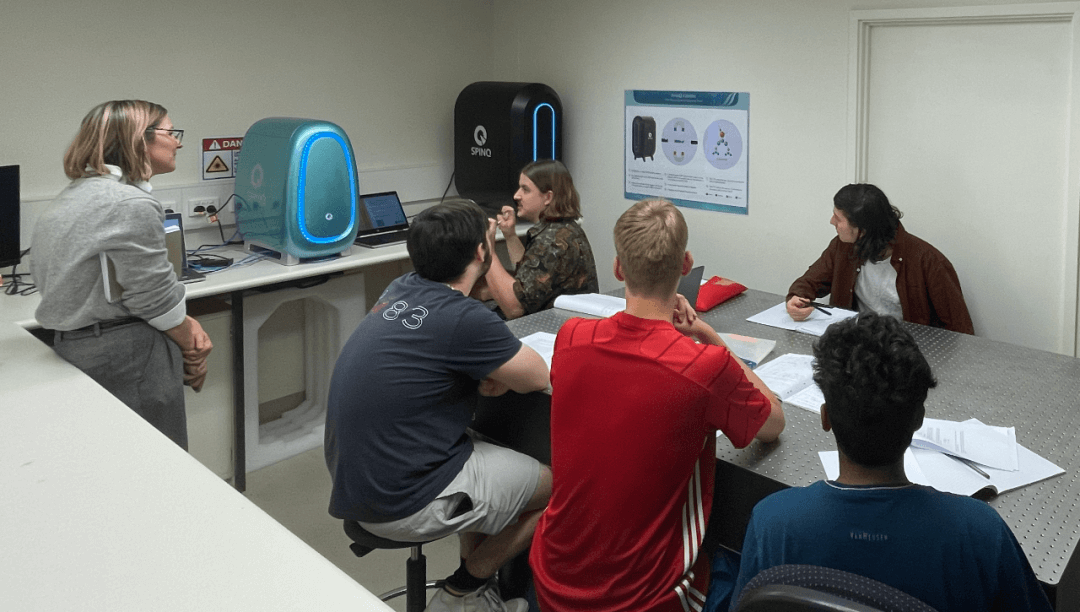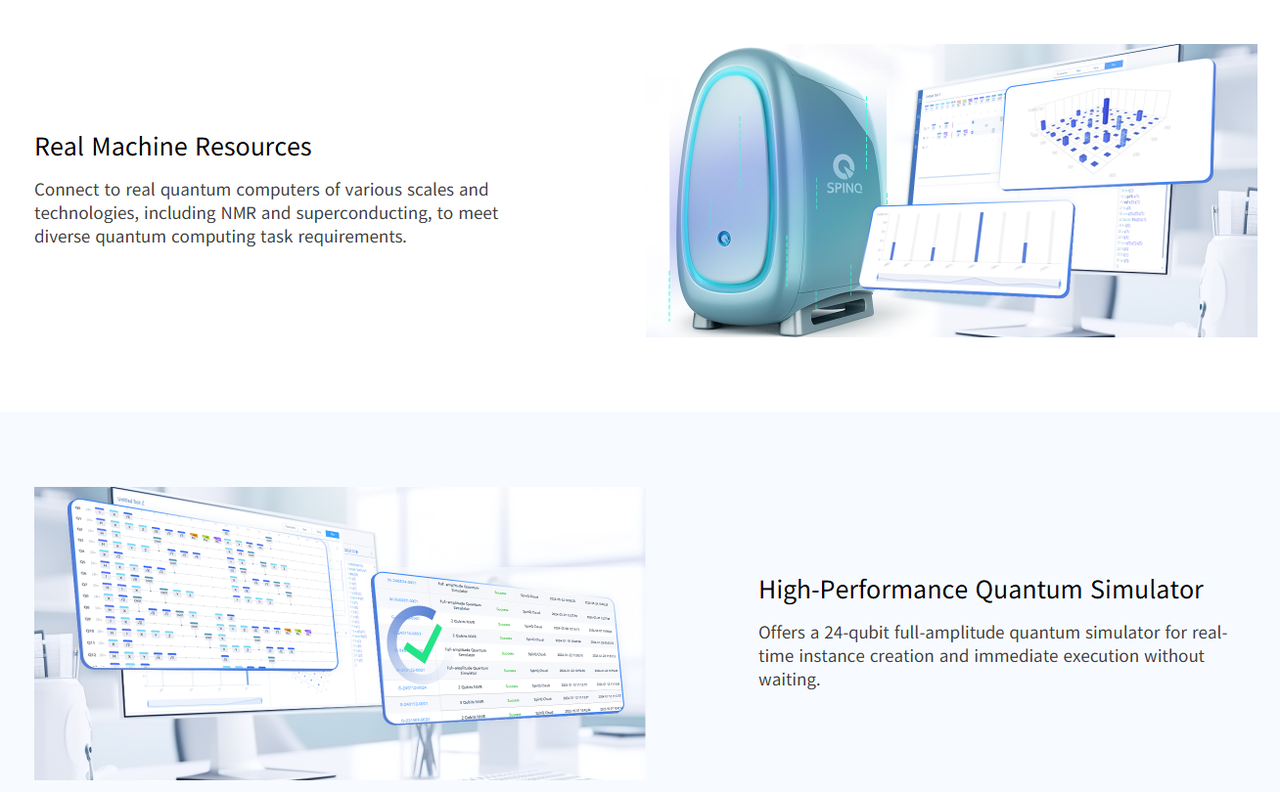How Quantum Computers Are Revolutionizing Education
2025.01.23 · Blog
The world of education is undergoing a profound transformation with the introduction of quantum computing. Once a niche field reserved for elite researchers and large corporations, quantum computers are now making their way into classrooms and educational programs.
These advanced quantum machines offer a unique opportunity to enhance learning experiences in various disciplines, from physics and computer science to engineering and beyond.
In this article, we'll explore how quantum computers are being used in education, the benefits they bring, and how they're shaping the future of academia.
.jpg)
What is Quantum Computer Education Use?
Quantum computer education refers to the integration of quantum computing technology into educational curricula, classroom tools, and hands-on learning environments.
This allows students, researchers, and educators to engage with real quantum computers directly or through quantum simulators, gaining insights into one of the most promising technological advancements of the 21st century.
Quantum computing can be applied across various levels of education, from high school physics lessons to university-level courses in quantum mechanics, computer science, and even interdisciplinary fields like quantum chemistry and artificial intelligence.
Quantum Computing in Education: An Overview
Quantum computing, with its ability to solve problems that classical computers cannot, offers vast opportunities for educational innovation.
Students studying quantum physics, computer science, and engineering now have access to quantum systems that were once only available to top researchers. This has led to the development of specialized educational tools, curricula, and even quantum-powered simulators to make this advanced technology more accessible.
Key Benefits of Quantum Computer in Education
1. Educational Quantum Computers: Enhancing Understanding of Quantum Mechanics
Quantum mechanics, the theoretical foundation of quantum computers, is notoriously difficult for students to grasp.
By utilizing education-grade quantum computers in the classroom, educators can demonstrate real-world applications of quantum principles like superposition, entanglement, and quantum interference.
This hands-on learning approach significantly deepens students' understanding, allowing them to visualize complex quantum phenomena rather than merely reading about them in textbooks.

2. Fostering Critical Thinking and Problem-Solving
Quantum computers are capable of solving problems that classical computers cannot, such as optimizing large-scale systems or simulating molecular behavior for drug discovery.
By incorporating quantum computing into education, students are challenged to think critically and creatively about complex problems. It teaches them to approach problems from a new perspective—thinking in terms of quantum states, parallel processing, and probabilistic outcomes rather than deterministic solutions.
3. Quantum Education: Preparing Students for Emerging Careers
As industries begin to explore quantum computing for practical applications, there is a growing demand for professionals skilled in this field.
By introducing quantum computing in education early on, we can equip students with the foundational knowledge necessary for careers in quantum research, software development, cryptography, finance, and beyond.
With companies like IBM, Google, and SpinQ leading the way, the job market for quantum-skilled workers is expected to skyrocket in the coming years.
How Quantum Computers are Used in Educational Settings
1. Education-Grade Quantum Computers
Quantum computers designed for quantum education are now more accessible than ever. SpinQ, a leading quantum computing company in this field, provides innovative solutions tailored for classroom use.
SpinQ's educational quantum computers, including the Gemini and Triangulum models, make learning quantum principles more accessible and practical. These devices are compact, affordable, and operate at room temperature, making them ideal for universities, high schools, and research institutions.
By allowing students to experiment with quantum algorithms and interact with real quantum hardware, these computers provide hands-on experience beyond theory. This direct engagement deepens their understanding of quantum computing and prepares them for future advancements in the field.

2. Quantum Simulators and Cloud-Based Quantum Computing
Besides real quantum computers for quantum education, quantum simulators and cloud-based quantum computing platforms also play a vital role in educational applications.
These platforms, like IBM's Quantum Experience, SpinQ Cloud, and Microsoft's Azure Quantum enable students to experiment with quantum algorithms and protocols in a virtual environment.
They offer a cost-effective and scalable way to access quantum computing power without requiring physical quantum computers. This makes it easier to explore foundational principles of quantum computing, including qubits, quantum gates, entanglement, and more, in an accessible and interactive manner.

3. Interdisciplinary Learning Opportunities
Quantum computing offers opportunities to bridge various fields of study. For instance, quantum chemistry can be explored through quantum simulations, while quantum algorithms can be applied to solve problems in machine learning and artificial intelligence.
With the interdisciplinary nature of quantum computing, students from diverse backgrounds—whether in physics, computer science, engineering, or even biology—can collaborate and develop innovative solutions to real-world challenges.
The Future of Quantum Computing Education
.png)
As quantum technology continues to advance, so too will the tools and resources available for quantum education. Many educational institutions worldwide have already incorporated quantum computing into their curricula.
Quantum education is not just about teaching students how quantum computers work, but also about preparing them to think differently—encouraging curiosity, innovation, and the ability to solve problems that were once deemed unsolvable.
By integrating quantum computing into educational pathways, we're not just training the next generation of quantum scientists—we're equipping future leaders with the skills necessary to shape the next wave of technological innovation. From developing new medicines to improving energy efficiency and cybersecurity, the impact of quantum education will be felt across industries.
Conclusion
Quantum computers are not only transforming industries but also revolutionizing education. By providing students with the tools to engage directly with quantum systems and algorithms, we are fostering a generation of innovators who will drive the future of quantum technology.
As more educational institutions adopt quantum computing as part of their curriculum, the possibilities for quantum teaching, learning, and research are limitless. Investing in quantum education today means preparing students to thrive in the quantum-driven world of tomorrow.

